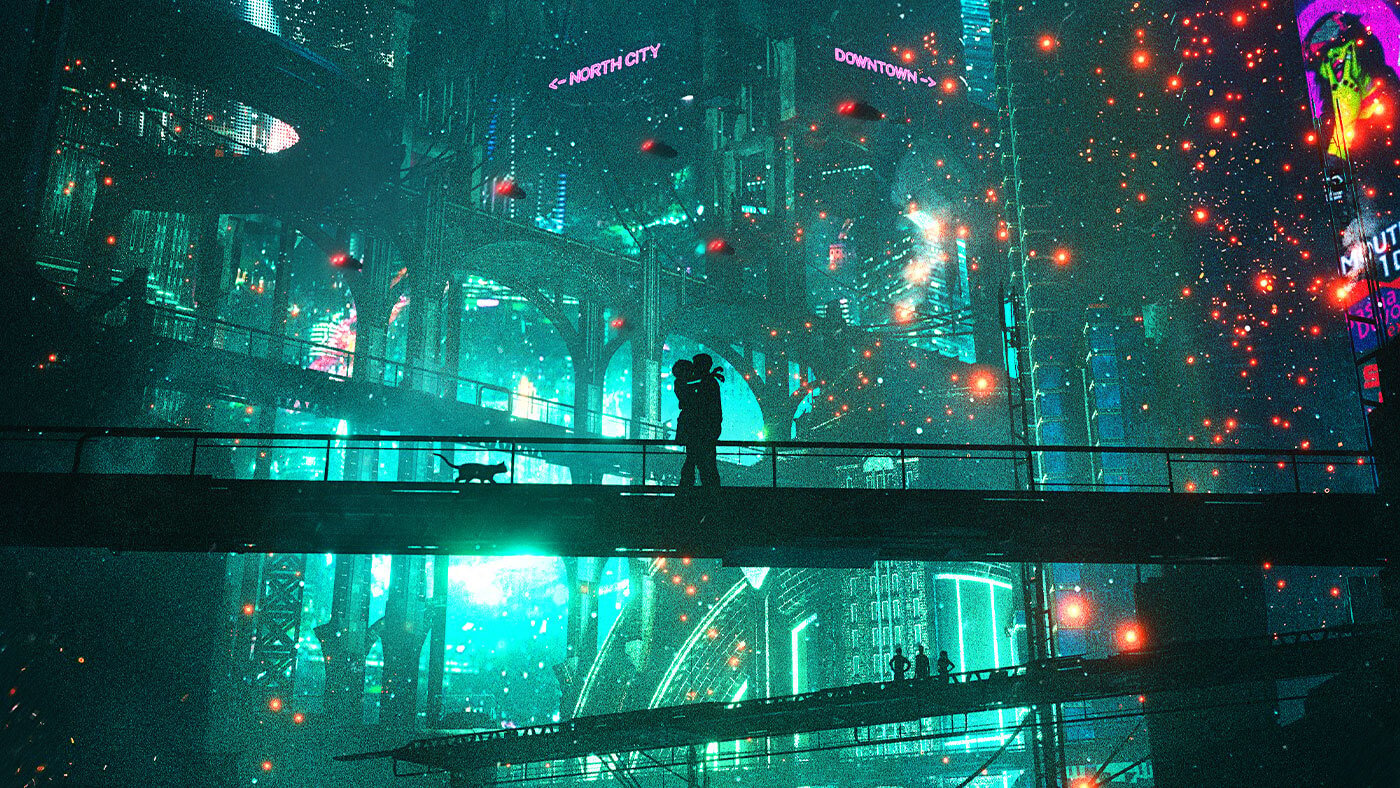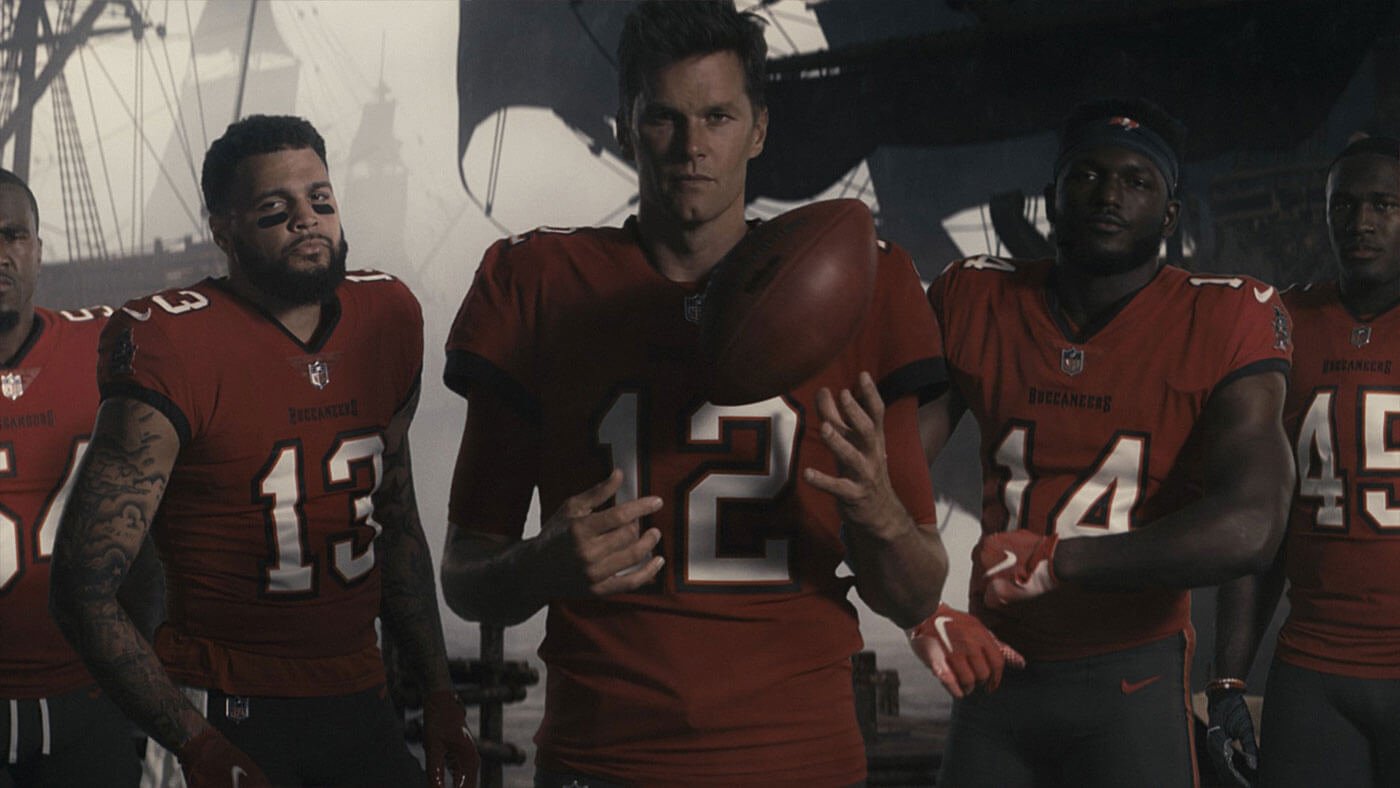Exploring Epic Megacities with Annibale Siconolfi
With clients like Warner Brothers, art exhibitions around the world, and over 170,000 followers on Instagram, Annibale Siconolfi is a force to be reckoned with. The music producer, architect, and 3D artist is primarily known for visualizing remarkable megastructures from different possible futures - both good and bad – and recently, we were fortunate enough to catch up with Annibale to get an inside view on his artwork and his plans for the future!

KitBash3d: Annibale, thanks so much for joining us today to explore your megacities! Can you introduce yourself and share a little bit about your artistic journey thus far for those who aren’t familiar?
Annibale: I started my career three years ago when a music label commissioned my first work. Before that I worked as an architect and music producer. After several years of architectural visualization, thanks to the discovery of artists like Beeple, Stuz0r, Paul Chadeisson, etc. I started to experiment with more artistic fields of 3D.
That first job for the music label was an exciting experience, so I decided to dedicate more time to 3D art and to experiment with new techniques. In the last 3 years, I have worked for directors, creative agencies, and musicians around the world.
I have a lot of good memories about my 3D artist job, like the work I did for one of my favourite music producers, Thys from Noisia.

Annibale: And more recently, I’ve collaborated with the architect Tomas Ghisellini for the visualization of a post-COVID children’s school.

KitBash3D: Very cool! Your story will no doubt inspire many to explore 3D for themselves. After experimenting in different styles, what drew you to creating massive cityscapes and why do you think they’ve resonated so much with viewers?
Annibale: It fascinates me a lot to imagine the future of megacities. The interest in this topic started during my studies in Architecture. I enjoyed observing how many modern architects conceived the cities of the future, and some of their works were extremely detailed. It was an important input for me for sure. I think people are interested in my work because I represent a not too distant future. I don't talk about aliens, I represent problems or positive aspects that we could have in the future.

KitBash3D: The detail you achieve in your work is so vivid and enticing, they really feel like portals into possible worlds. Could you please share a little of the process that goes into making one?
Annibale: Before I start a project, I take some hours (or days) to think about some concepts, and when I have a clear vision in my mind, I start to create. The funny thing is that every time in my vision there is something that pushes me to try new techniques. Sometimes it works and I realize what I had set out to make, but many times I have to take a step back and put the project aside.
I don't use references when I work on my personal projects, only memories of the works I like. Sometimes I do sketches before I start a piece, but in most cases, I like to experiment directly in 3D. My advice to everyone is to experiment a lot. Learning new techniques from tutorials are very important, they have helped me a lot undoubtedly, but it is by experimenting that you can build your own unique style.

KitBash3D: Fascinating. Most artists we talk to emphasize references, so this goes to show that there is never a one-size-fits-all approach to art. Can you share a few pieces and what was going through your mind when creating them?
Annibale: This piece is called “Urban Dream.” I imagined we are at an altitude of 800 meters, and a man stops to look at the lights of a residential complex in a city of the future.

Annibale: This one is called “Seaside,” and it’s what I imagine a seaside town could look like in the distant future if the water level rises with the melting of the glaciers.

Annibale: This piece is called “Habitat.” In this future, overpopulation has given rise to dense and towering housing structures. Being that the territory is almost fully saturated with constructions, a vertical expansion is the only way to fit more citizens.

Annibale: For “Urban Relics,” I imagined a sort of open-air museum where a platform gives people the opportunity to visit the old disused buildings.

KitBash3D: That last concept is brilliant. Love the idea of the modern architecture we take for granted being celebrated or preserved in the future. And we can spot a few kits like Favelas in your work, but the one you utilize most frequently is our Future Slums kit, correct?
Annibale: I'm in love with the Future Slums pack, it gave me the opportunity to represent many detailed urban scenes. Here are some breakdowns of pieces using that kit:

KitBash3D: You have used it masterfully! We have time for just a couple more questions, and obviously we love seeing your work, so are there any goals for the future you can share with us, either artistically and professionally?
Annibale: This year I was contacted by two of the largest video game agencies in the world but I had to decline because I preferred to continue on my personal work. The same thing happened to me with some big engineering and architecture firms – they were very interested in my design but I preferred not to accept. Those were very difficult choices but I think I did the right thing for the moment. I want to continue my personal journey and evolve my style. I have several projects in progress and in November I will have the honor of exhibiting in an important museum together with other great artists.

KitBash3D: Ooh, looking forward to that! Last question, why do you make art and what inspires you?
Annibale: I don't know why I make art; I always did it since I was a child. I remember when I used to consume entire notebooks with my drawings already at the age of 5. I have always loved drawing and sound design, and over time I have been able to understand how similar these two fields are. Also, the study of Architecture gave me a more technical approach to dealing with art.
I'm mainly inspired by the work of architects like Le Corbusier, Frank Loyd Wright, Louis Kahn, Antonio Sant'Elia, Sou Fujimoto, and other artists like Beeple and Paul Chadeisson. I’m also inspired by writers, directors, and musicians. During my life, I had a lot of artistic influences from different fields and I think they actually converge in my art. Whenever I have doubts, the passion for this job helps me overcome them.
About Annibale Siconolfi
![]() Annibale Siconolfi, aka Inward, is an artist and architect from Italy. His art is characterized mainly by a complex 3D modeling of dystopian cities and futuristic landscapes. This vision is influenced by several elements: from science fiction movies to contemporary architecture but also from sensitive issues like global warming, human overpopulation, pollution, etc.
Annibale Siconolfi, aka Inward, is an artist and architect from Italy. His art is characterized mainly by a complex 3D modeling of dystopian cities and futuristic landscapes. This vision is influenced by several elements: from science fiction movies to contemporary architecture but also from sensitive issues like global warming, human overpopulation, pollution, etc.
You can follow his work over at his Instagram, Artstation, and Facebook.



